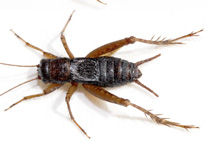Abstract
Stomatopoda Latreille, 1817 are known from the late Devonian to Holocene strata around the world (e.g., Hof & Briggs 1997; Schram 2010; Haug C. et al. in press). However, the Pleistocene record of Stomatopoda comprises only one species, Squilla empusa Say, 1818 from Maryland and Connecticut, U.S.A. (Rathbun 1935; Blake 1953; Waage et al. 2001). The authors collected some fossil mandibles associated with fragments of the raptorial claw of Stomatopoda from the Pleistocene Ogushi Formation, Kumamoto Prefecture, Japan. Fossil stomatopod mandibles have been reported from the Carboniferous of U.S.A. (Jenner et al. 1998), Carboniferous of Belgium (Schöllmann 2004) and Jurassic of Germany (Haug J.T. et al. 2008, 2010). The purpose of the present paper is to record the occurrence of stomatopod mandibles, first found in the Cenozoic deposits. The figured specimens are deposited in the Mizunami Fossil Museum (MFM) and Goshoura Cretaceous Museum (GCM-IVP).

